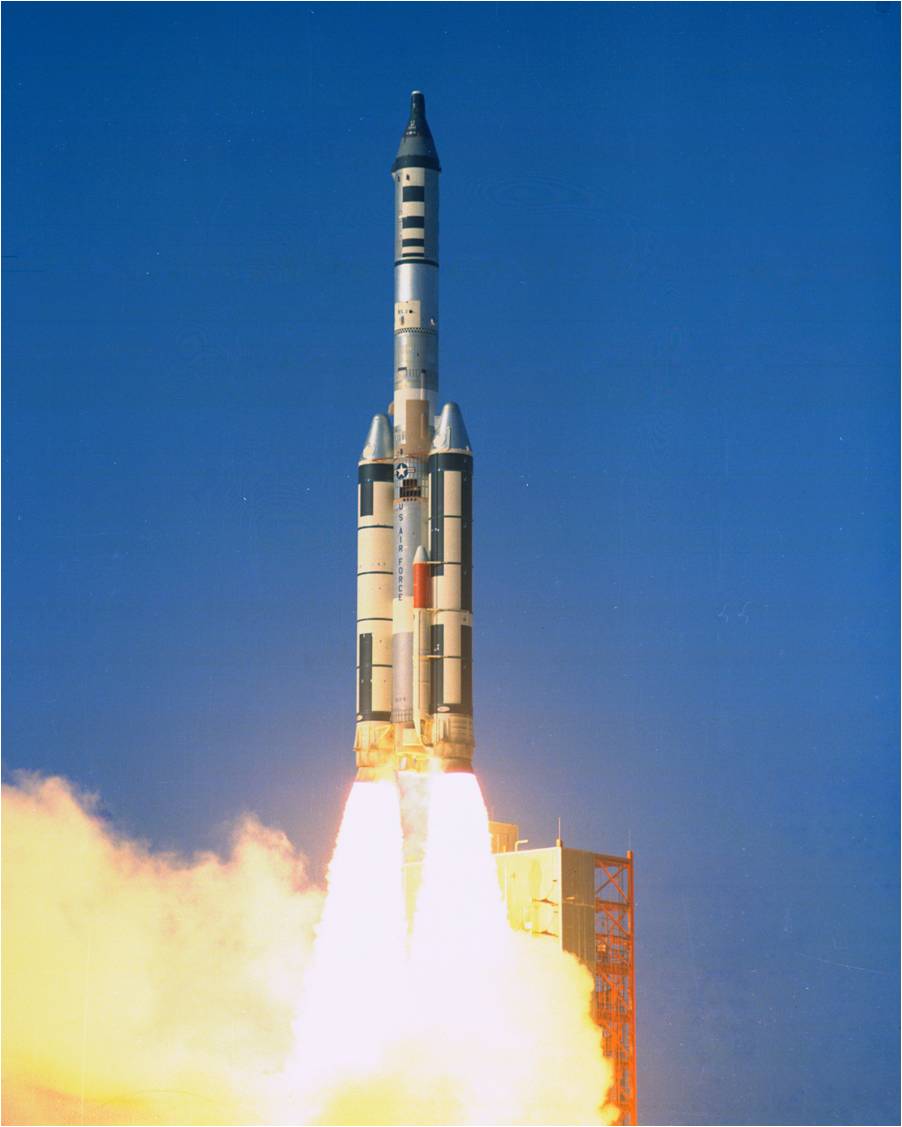Forty-four years ago this month, a prototype of the USAF/Douglas Manned Orbiting Laboratory (MOL) was launched into Earth orbit. It was the first and only orbital flight test of the military space station.
The Manned Orbiting Laboratory (MOL) was a United States Air Force (USAF) program to develop a military reconnaissance space platform in the 1960’s. Using advanced optic, camera and radar systems, the MOL’s military astronaut crew would have the capability to determine the nature of other countries’ military spaceflight activities. Of particular interest were the clandestine military activities of the Soviet Union and Red China.
Operational MOL missions were to be launched from Vandenberg Air Force Base (VAFB) on the California coast. Doing so would provide a polar orbit capability. The corresponding high orbital inclination meant that the MOL would overfly much of the Earth’s surface during a 24-hour period.
The MOL Program was formally announced to the American public in December of 1963. The prime contractor was the Douglas Aircraft Company (DAC). The MOL was a large cylinder that measured 72-ft in length and 10-ft in diameter. The MOL consisted of 5 segments; main cabin, auxiliary cabin, experiment module, equipment module and a propulsion stage. MOL GTOW was approximately 32,000 lbs.
Fixed atop the MOL was a variant of the NASA Gemini spacecraft known as Gemini B. The crew would ride into and out of orbit in this vehicle. Access to the MOL was via a small door built into the Gemini’s heat shield. Once inside the MOL, the crew would doff their spacesuits and live in a “shirt-sleeve” environment. MOL was to use a two-gas atmosphere (70% oxygen-30% helium). A typical MOL mission was on the order of 30 days.
The Gemini-MOL combination was to be boosted into orbit by a Titan IIIC launch vehicle. First stage propulsion consisted of a pair of solid rocket boosters and a liquid sustainer core. Total lift-off thrust was about 1.84 million pounds. Second stage thrust was on the order of 100,000 pounds. The Titan IIIC third stage was the MOL transtage which produced 16,000 pounds of thrust.
Seventeen (17) MOL astronauts were selected in three (3) groups from the military services. MOL Group 1 (November 1965), MOL Group 2 (June 1966) and MOL Group 3 (June 1967) consisted of eight (8), five (5) and four (4) selectees, respectively. None of these men ever flew a MOL mission. However, seven (7) went on to fly on the Space Shuttle.
On Thursday, 03 November 1966, the one and only flight test of the MOL Program took place. Lift-off from Cape Canaveral’s LC-40 occurred at 13:50:42 UTC. A Titan II propellant tank served as the MOL test article. The previously-flown Gemini 2 spacecraft was employed as a representation of the Gemini B vehicle. The lone MOL prototype flight test was unmanned.
During Titan IIIC ascent, the Gemini 2 spacecraft separated and executed a sub-orbital reentry. The vehicle splashed-down in the South Atlantic Ocean near Ascension Island and was recovered by the USS La Salle. Post-flight inspection of the vehicle’s heat shield hatch revealed that it came through the reentry intact.
Meanwhile, the Titan IIIC launch vehicle successfully orbited the MOL prototype. In addition, a trio of satellites that had accompanied the MOL mock-up was successfully injected into Earth orbit. Thus, the first and only flight test in the history of the MOL Program was entirely successful.
Despite its game-changing mission, a successful flight test and its technical feasibility, the MOL Program never achieved operational status. It was cancelled by U.S. Secretary of Defense Melvin Laird in 1969. The cancellation came at a time when the country had invested heavily in the Apollo Program throughout the 1960’s, the Viet Nam War was escalating and unmanned satellite sensing technology was greatly improved.
The MOL cancellation was a real shot to the solar plexis of the American aerospace industry. Coupled with the contemporaneous ramp-down of the Apollo engineering and development effort, American aerospace would never again see the breath and depth of financial investment it enjoyed in the 1950’s and 1960’s.
The lone surviving physical artifact of the MOL Program was the twice-flown Gemini 2 spacecraft. It is on display today at the Air Force Space and Missile Museum at Cape Canaveral, Florida.

